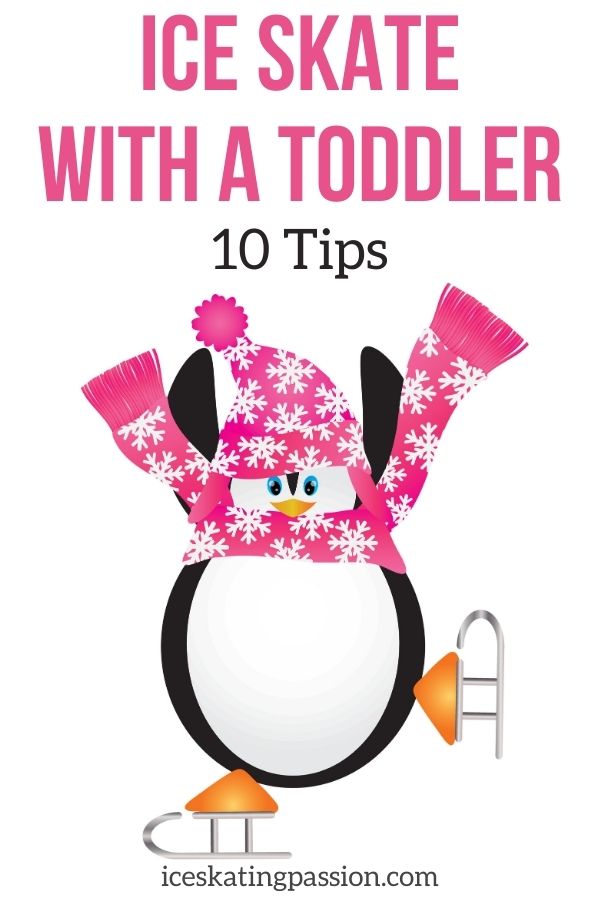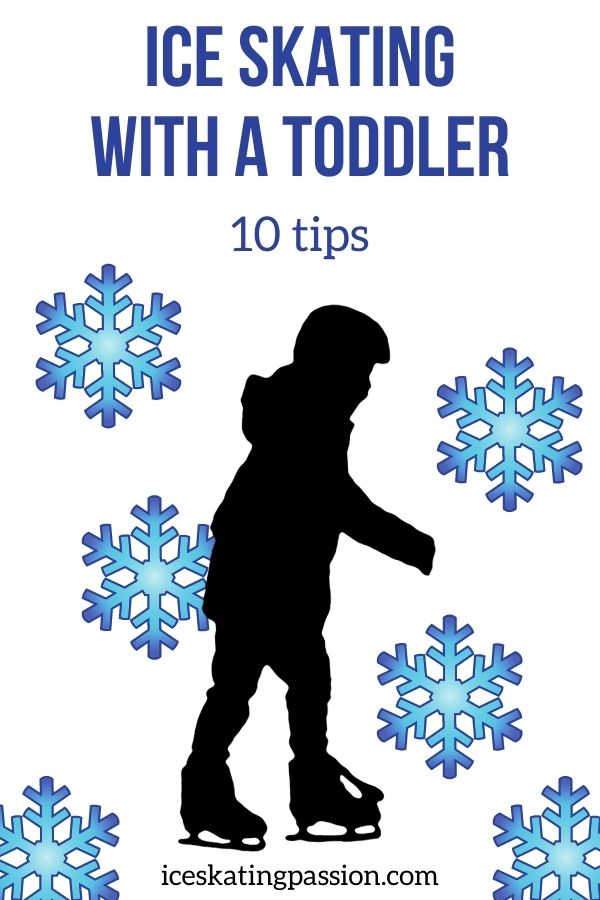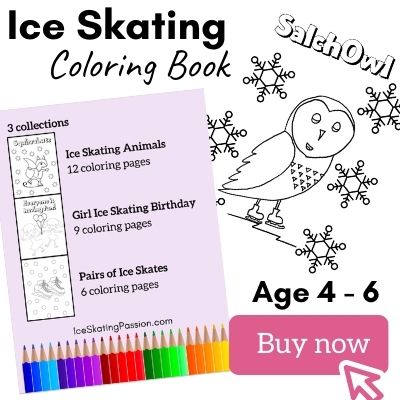Do you want to go ice skating with a toddler? Want to be ready for a fun experience? Below are my top 10 tips, step by step to take you from the idea to teaching your kid how to ice skate.
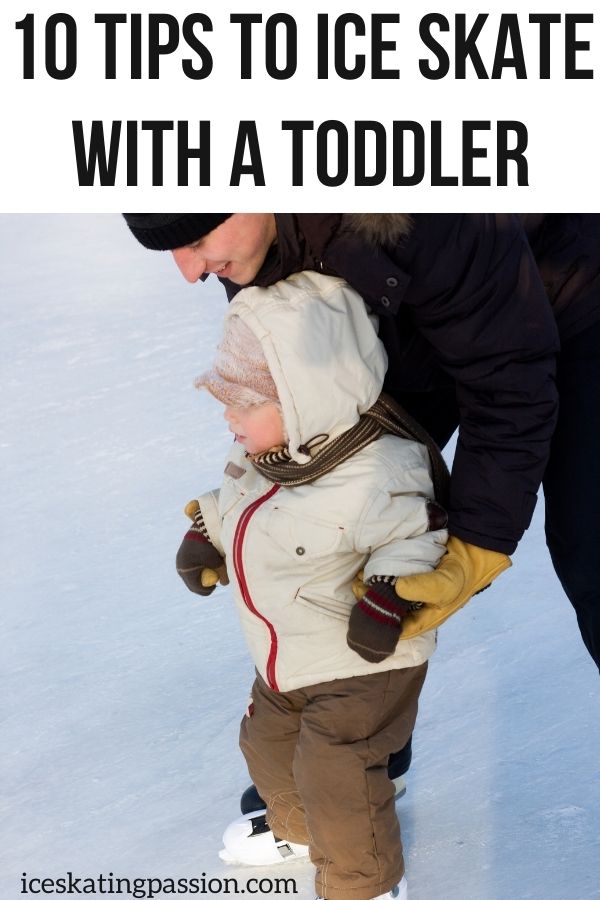
This article may contain affiliate Links (info on the Disclosure page). If you purchase using my link, I get a commission at no extra cost to you.
#1 Identify if your child is ready - Best Age to start ice skating
What age can a toddler start ice skating? Can a 2-year-old ice skate?
They might not be able to tell you, or express in any way that they are interested in ice skating until they are 3. However, any child who can walk, can also easily learn to skate. You can begin teaching them, but one needs to be really careful with a child so young as there can be technical issues as well as safety issues.
It is a good idea to wait until the kid can understand basic instructions before you strap them onto ice skates. Most people say that a good age is between 2 and 3 but all kids are different and so, the ages vary. Just observe your own child for his/her readiness. More details on my article about the best age to start ice skating.
To prepare before ice skating, why not read a book together to show the fun of ice skating?
#2 Choose the Best skates for your toddler
What skates for toddlers? Best ice skates to start with -
Go for skates which have solid plastic boots with adjustable straps which fit over the growing feet. The strap looks like a ski boot strap. It can be adjusted when the child is to go on the ice. The inner bootie is soft and is also adjustable, and hence, quite comfortable.
The children’s ice skates come in junior sizes. They can appear like a number followed by the letter J – such as, 6J.
Check out my article about the best ice skates for toddlers.
Are double blade skates a good idea?
It is commonly believed that if a child begins using double blade skates its easier for them to balance and skate well.
However they will delay the child from learning proper techniques.
Hockey skates vs figure skates
You can learn with both types of skates. However, it is often considered that the long blade of figure skates makes it easier to find your balance at the beginning.
The rocker style blades on most ice hockey skates, make you more agile, but make you fall more easily.
Check out my article comparing both types of skates.
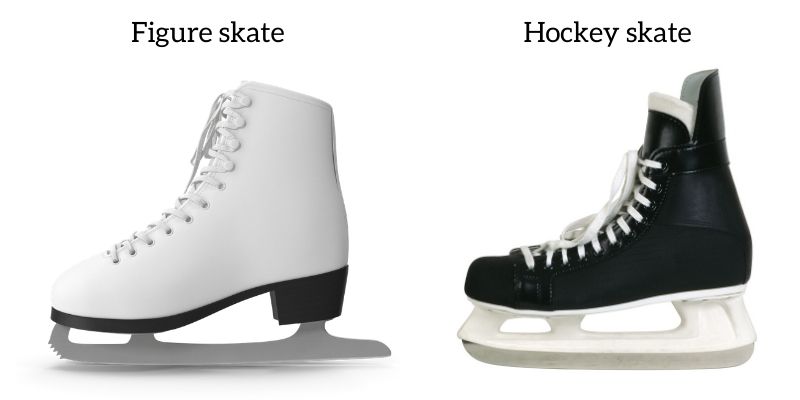
#3 Get the toddler ready for ice skating
Before doing any ice skating, make sure your toddler is ready to go on the ice:
- Comfortable clothing - The child must be in comfortable clothes which are not too thick nor too thin. Moderately thick clothing allows for movement whilst keeping the child warm. Since the rinks are very cold, the fabric of the clothes the child is wearing must be warm and unrestrictive to movement.
- No loose fabric - avoid scarfs that float
- Thin socks - contrary to popular belief (and the words of non ice skater journalists), you should not wear thick socks. They hinder from finding good balance and end up not being really warm because of the lack of circulation. Prefer warm yet thin socks
- Helmet - Always get the toddler to wear a helmet to avoid head injury when falling on the hard ice. Kids cannot brace themselves or avert getting hurt. A cycling helmet with a long brow can be sufficient, but it can be fun for your kid to wear a hockey helmet as long as it is not too big.
- Gloves – Simple mittens are OK as the kids just need to push themself up from the ice when they have fallen down so there must be a protective layer separating their hands from the very hard and cold ice.
- Knee Pads – They are generally protective if the child simply falls. Children fall forwards on their knees usually, or backward on their butt so knee pads can safeguard them from a lot of bruising and hurting.
And if you are really stressed (but ice skating is not that dangerous), you can add:
- Elbow Pads – you can make them wear elbow pads if you feel they fall more on their forearms.
- Wrist Guards – If the child seems likely to brace himself using his hands when he falls, there is a chance the wrist gets injured - to avoid this happening, use wrist guards.
- Padded Pants – this is to avoid any injury to the backside if the child is more prone to fall on the hips. The padded pants would also avoid bruising and injury to the hip bone.
You can also check my article with my top 10 tips for beginners to avoid injury.
#4 Choose a kid-friendly rink time
You can find a good slot for the kid by doing basic research at the selected rinks and figuring if they have child specific timings.
The public sessions are usually really loud, people are skating really fast and it can be dangerous too as there are newbies going around in the rink as well.
Find a time slot in which there are fewer people and preferably the timing is kid-specific or at least, dedicated to amateurs.
You can also take your toddler to a frozen over pond or lake for learning but not without checking all safety pointers.
#5 Decide if you want training aid / or hold them
You may want to give your child support of some kind on the ice so to avoid painful falls, tears, and potential injuries. The help for the little ones can be either by using the aids or by holding them.
For achieving the balance point, the child is required to be standing up straight so that his/her weight is proportionately distributed over the blade. So, whatever you do to help, it must not change the weight balance of your child. Below are the 2 best options:
Option 1 – Hold your toddler the right way
The parent can skate alongside him/her & hold him/her from behind, placing support under the kid’s arms. Ask him/her to march and take little baby steps, but only one at a time. It will be counter-productive to let your child hang on to you completely because he/she needs to figure it out on his/her own to find the balance. Instead of carrying him/her all over the ice, just be there to help him/her find his/her feet on skates while you protect him/her from falling backwards.
Do not hold them from the front or from the side.
Option 2 – Have your toddler use an ice walker
You can use an ice walker but beware that experts say it hinders the toddlers in finding their balance & build skating skills. Most skaters when they use these walkers, tend too heavily lean forward on the walker and fall over all the time while trying to skate on their own after.
If the training aid is the right size and the kid is not bending forward when using it, then it is fine.Therefore, it is only for young children
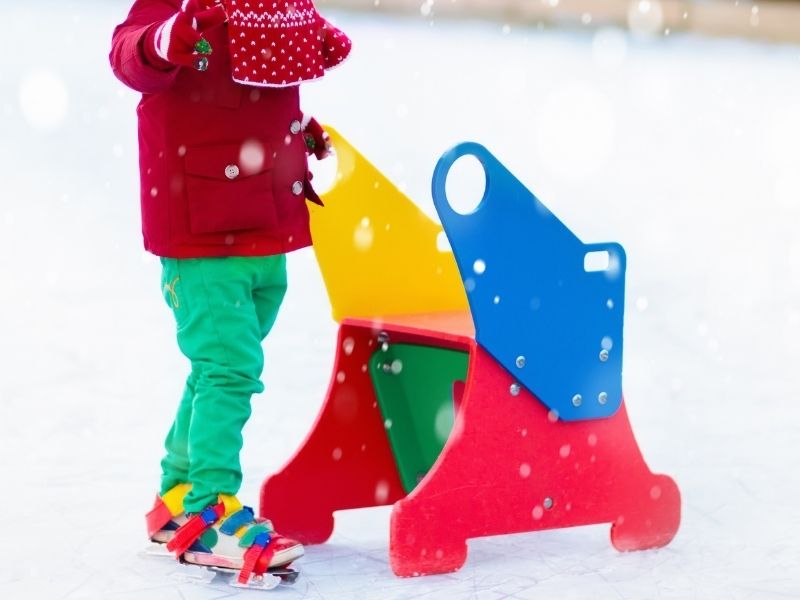
Surround your kid with his/her passion!
#6 How to teach a toddler to ice skate - Start by marching
The first step on the ice must be marching.
Have your toddler simply march on the ice a little bit like a penguin, so that the child learns to transfer his/her weight properly from one foot to the other.
Another example you can take is a dinosaur.
#7 Fall on purpose early on and teach to stand up
Explain falling is ok
For a child, falling is the most potent trigger for tears. You will have to tell him/her falling is OK as long as one tries and learns to get up. Before he/she goes to the ice, he/she must be taught falling and getting back up on a normal floor.
It's going to be a frustrating process to learn and also teach but it can be made fun or done with some game that makes falling an OK thing. Teaching him/her about this must be intended to take the panic out of the fall. The child may get tired, scared or ashamed and upset if he/she falls, even if it doesn’t physically hurt him/her.
Show him/her what to do when he/she loses balance and fall. Normalize falling.
Teach to fall
Yes, there is a right way to fall: bend your knees when you feel the imbalance and dip to the side of your butt (here, the most important part is to not fall backwards and hurt the back of the head). Arms are to be kept a little bit out but also close to the body to help upon impact.
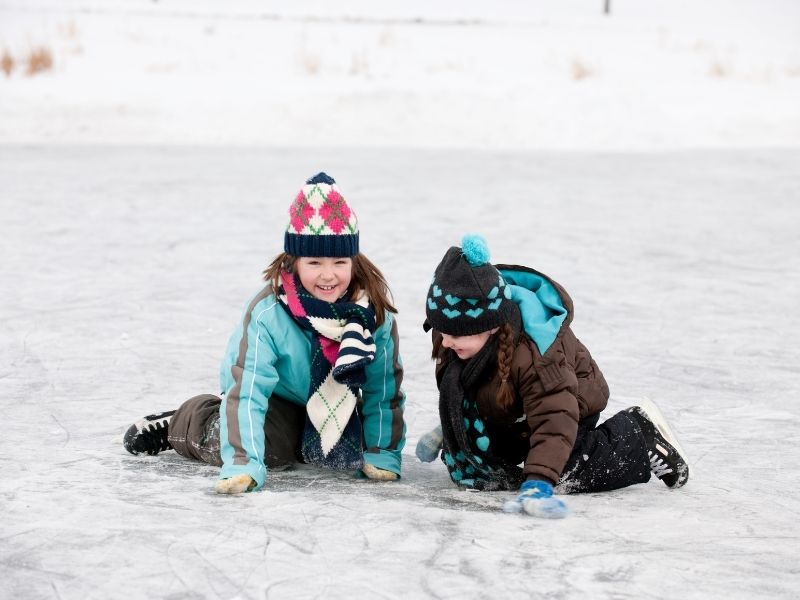
Teach to Stand up
After falling, the kid can get up using the correct way, which is:
- Turning over to one’s hands and knees
- Lifting up one knee
- Pushing oneself up with both hands as one applies pressure to the toes.
The kid must practice this on a normal floor before doing this on the ice.
#8 Start gliding
Once your toddler is marching on the ice, over time, the march will flow into a glide.
When that happens, you can explain to change from loud feet (like Happy feet) to quiet feet, more stillness.
#9 Teach to stop
Starting to skate is fairly simple, however stopping needs to be taught once the kid starts gliding.
- Before any other trick, make sure you teach them to stand with their feet together and push out the edges shaving the ice.
- Then teach the snowplow: the child needs to bend the knees, bring toes together as an inverted V and push down for the balance. Once this is done successfully, get him/her to put the weight on one leg and slide the opposite skate out.
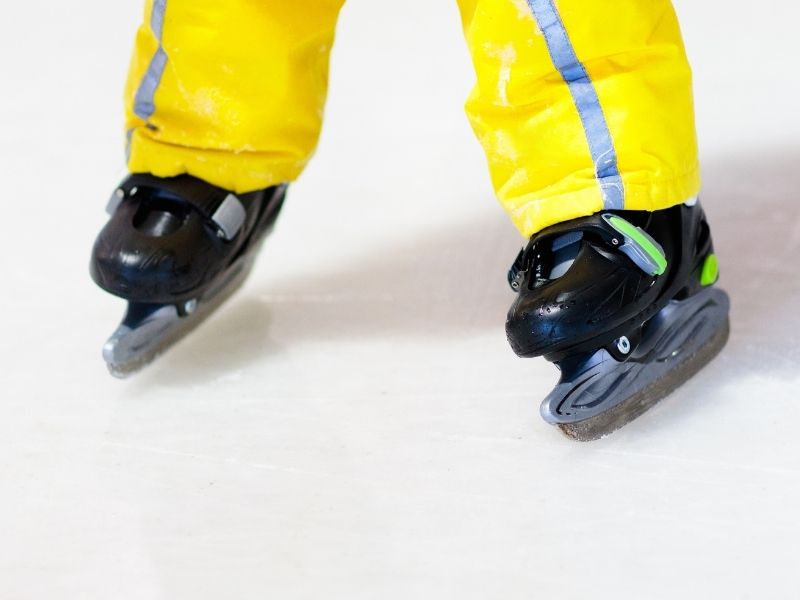
#10 Consider a class
You can get him/her enrolled in a class so that he/she gets to learn skating properly. It is by far the most ideal way to learn the skating, fast and effectively.
You might also be interested in:
